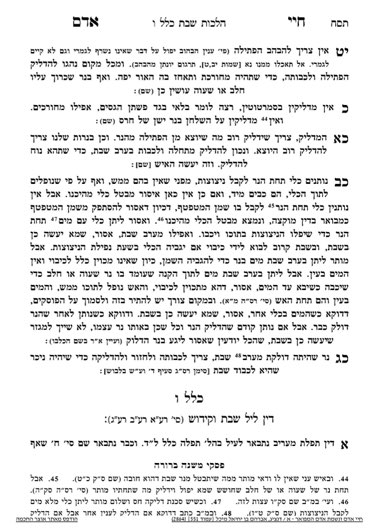We would like to thank our sponsor for this series, who sponsored a total of 41 shiurim on the topic of tosefes Shabbos and hadlakas neiros. May this zechus of limmud HaTorah and tzedakah help those who need shidduchim , and stand as a zechus for him for sponsoring!!
The next series, on the halachos of kiddush and the seudah, is available for sponsorship. All monies go to support Kollel Zichron Amram of YGW. Please contact Rabbi Reingold for further information.
We are beginning siman 23. The Chayei Adam writes that if one has a candle lit from before Shabbos, they must extinguish it and relight it in order to use it for neiros Shabbos. It is not clear why one would have a candle lit during the day. But in a scenario that one did so, it must be relit to make it obvious that is was lit l’kavod Shabbos.
The Shulchan Aruch writes that the hadlakah should be adjacent to Shabbos so that one can immediately accept Shabbos after lighting. This will also help in clarifying that the hadlaka was done l’kavod Shabbos. However, we have mentioned the idea of making a tnai in order to avoid accepting Shabbos through hadlakas neiros. This could create an issue in which a woman will light neiros Shabbos earlier in the day, and then go about her merry way doing various activities which make it unclear why she lit those neiros. Therefore, the Shulchan Aruch Harav writes that one who lights neiros Shabbos with a tnai must accept Shabbos within 15 minutes of lighting. The Shulchan Aruch Harav adds that the person who lights the neiros does not have to be the person who accepts Shabbos within 15 minutes, but it could be someone else in the household. For that person, it will be obvious that it is Shabbos and why the neiros were lit.
We mentioned from the Teshuvos Kinyan Torah that the hadlaka itself makes it obvious why one is lighting candles, since electric illumination makes it unnecessary to light candles. If so, the concern above would no longer be relevant. However, if one’s electricity goes out, they would need to be careful that their acceptance of Shabbos is close to the time of their hadlakah in order to follow the Shulchan Aruch.
A few other points:
We learned that the minhag is to light at least two neiros, and some have the minhag to light seven, ten, or the amount of neiros corresponding to the people in their household. The lattermost minhag is followed even if that child is no longer alive.
This lattermost minhag was not accepted when a woman is away from home, but rather to light the minimal amount of two.
We learned about the knas imposed on a woman who forgot to light one Shabbos out of negligence. This knas does not appear in the Gemara, but was added later. Therefore, any time there is a way to interpret the question as an oneiss, we are lenient and do not impose the knas. Women find the knas emotionally challenging, so finding a leniency can be important. Alternatively, one can follow the approach of the Elya Rabba to add more oil.
Summary
-
If one has a candle already lit which they would like to use for hadlakas neiros, it must be extinguished and relit.
-
Even when one makes a tnai when lighting, someone in the house should accept Shabbos within 15 minutes of lighting in order to demonstrate that the candles are for neiros Shabbos. With the advent of electricity, this concern is not as strong.
-
Women who light the amount of neiros corresponding to the amount of people in their family continue lighting that number even if the spouse or child dies.
-
The minhag is that a woman away from home only lights two candles
-
In general, we find leniencies in order to avoid imposing the knas of lighting an extra candle for a woman who was negligent.



